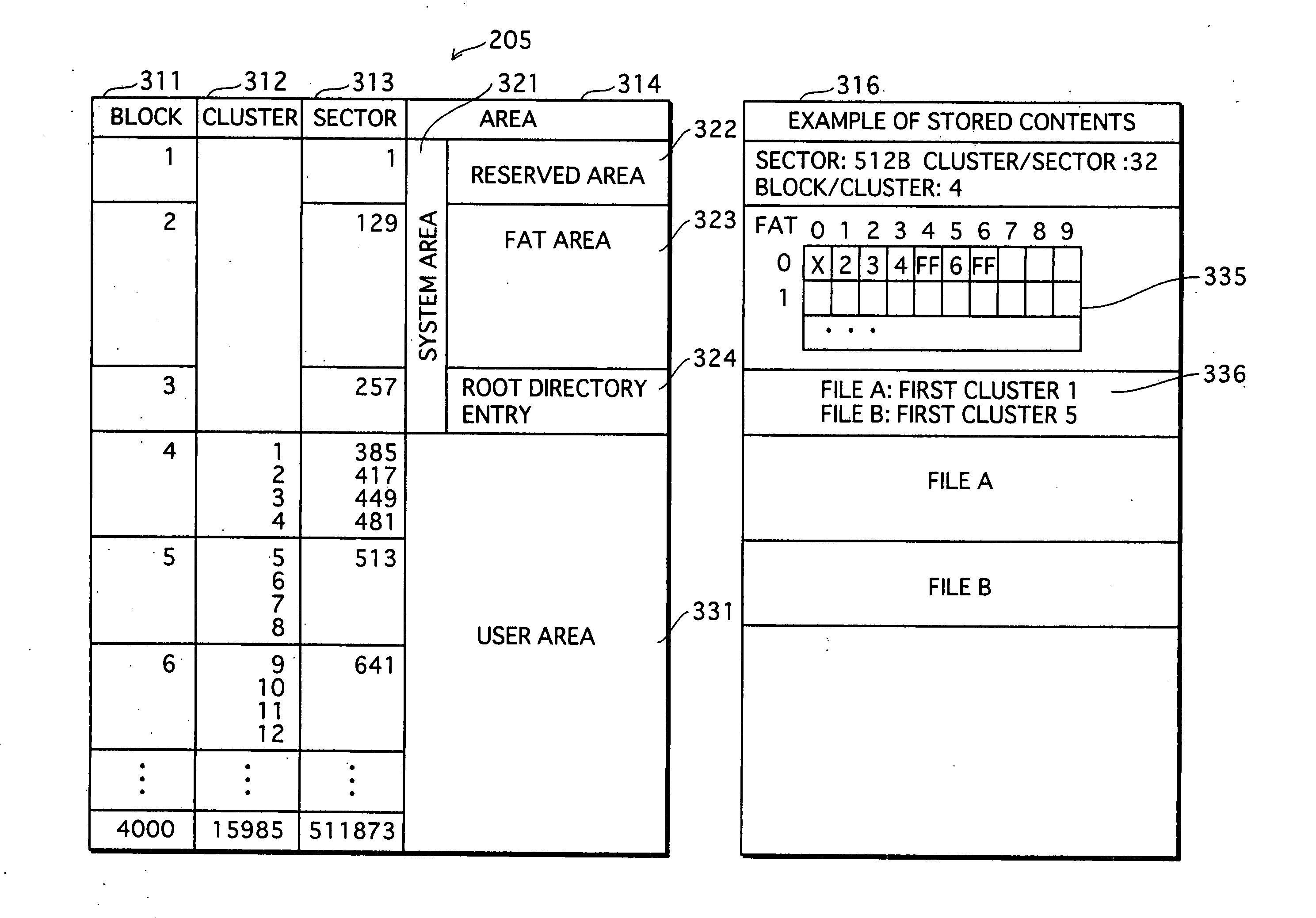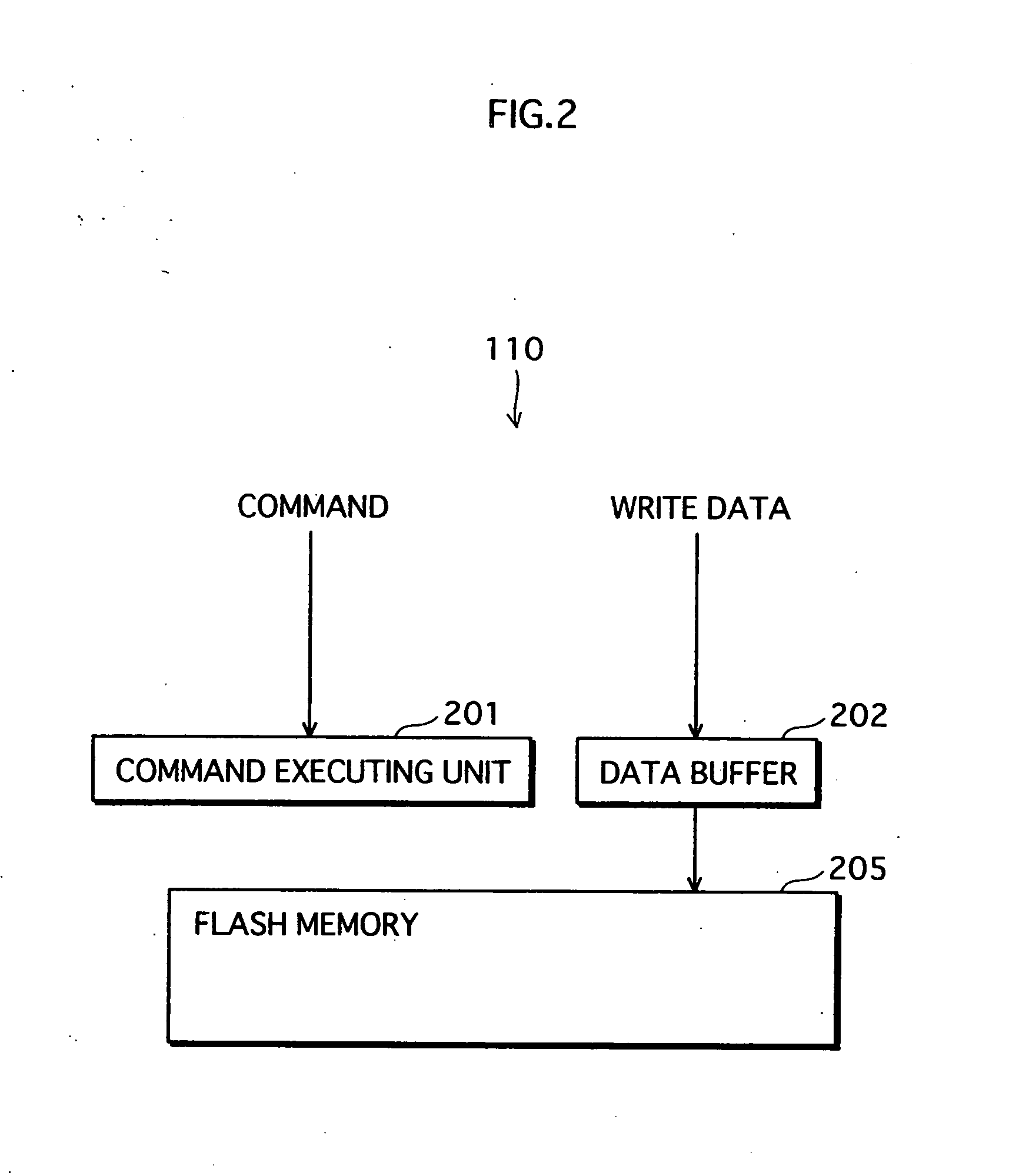File recording apparatus
a file and recording technology, applied in the field of file recording apparatus, can solve the problems of long processing time and low memory capacity efficiency, and achieve the effect of effective file recording
- Summary
- Abstract
- Description
- Claims
- Application Information
AI Technical Summary
Benefits of technology
Problems solved by technology
Method used
Image
Examples
first embodiment
[0040] In a first embodiment, the file system ensures effective recording of files.
[0041]FIG. 1 shows a structure of a file recording apparatus according to the first embodiment.
[0042] The file recording apparatus is composed of a memory card 110, file buffers 120, a write buffer 125, an I / O (input and output) request receiving unit 130, a data accumulating unit 140, a file writing unit 160, and a file management unit 190.
[0043] The file recording apparatus is additionally provided with a CPU and memory, which are not shown in the figures. Each component units mentioned above is comprised of a program or memory area. Programs comprising component units are loaded to the memory and executed by the CPU.
[0044] The file recording apparatus receives an I / O request for one or more files. Sources of an I / O request are, for example, an application running on the file recording apparatus and a device connected via a network. Such I / O request sources may concurrently request the file reco...
second embodiment
[0109] In a second embodiment, a data write to the flash memory is performed in units of blocks and the block size data to be written may be composed of data of a plurality of files.
[0110] A file recording apparatus according to the second embodiment is basically similar in structure to the file recording apparatus according to the first embodiment shown in FIG. 1, except two component units unique to the second embodiment. More specifically, the file management unit 190 and the file writing unit 160 have different functions from their counterparts. Hereinafter, a description is given to the differences.
[0111]FIG. 8 shows an example of how data is accumulated in the respective file buffers 120A, 120B, and 120C, and written to the flash memory. According to the first embodiment (FIG. 4), data accumulated in each file buffer 120 is written to the flash memory 205 at the time when data is newly accumulated in one of the file buffers 120 and the size of data accumulated in that file b...
third embodiment
[0120] According to a third embodiment of the present invention, a filter driver operable in the file recording apparatus ensures effective recording of file data.
[0121]FIG. 10 shows the hierarchical structure of software operating in the file recording apparatus according to the third embodiment.
[0122] An application program 1010 is a source issuing a file recording request, within the file recording apparatus. A program for recording video contents is one example of the application program 1010. In order to record a file, the application program 1010 issues an I / O request to a file system 1020.
[0123] The file system 1020 is an existing general-purpose file system, such as an FAT file system for Windows operating system (produced by Microsoft Corporation). The file system 1020 records and manages files. More specifically, the file system 1020 carries out, in addition to file management as in the conventional art, processing such as recording of a new file in response to a file I...
PUM
 Login to View More
Login to View More Abstract
Description
Claims
Application Information
 Login to View More
Login to View More - R&D
- Intellectual Property
- Life Sciences
- Materials
- Tech Scout
- Unparalleled Data Quality
- Higher Quality Content
- 60% Fewer Hallucinations
Browse by: Latest US Patents, China's latest patents, Technical Efficacy Thesaurus, Application Domain, Technology Topic, Popular Technical Reports.
© 2025 PatSnap. All rights reserved.Legal|Privacy policy|Modern Slavery Act Transparency Statement|Sitemap|About US| Contact US: help@patsnap.com



